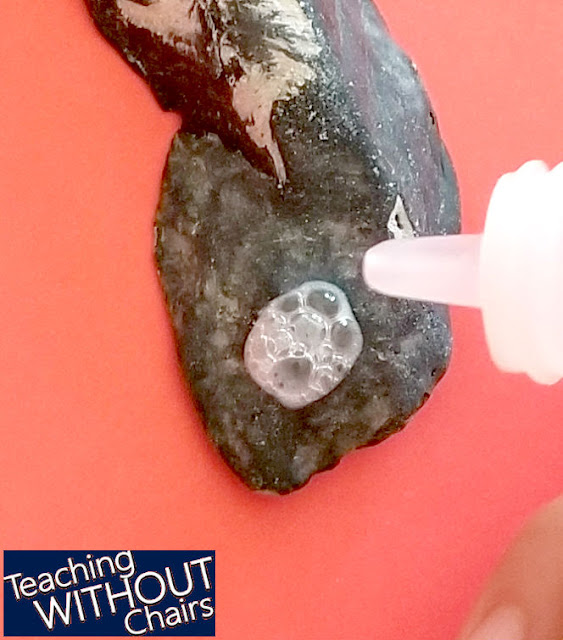Fizzing Seashell Science Experiment--Use in Ocean Unit Studies!
Perfect for Chemistry or Ocean Unit Studies, this reaction between shells and a strong acid is so fun our kids started sorting shells by which ones we were going to fizz and which ones were too pretty!
If you followed along with our Snails & Slugs Unit Study you already know that shells are full of calcium. Most of that occurs as calcium carbonate, which makes a fantastic fizzing reaction when it comes into contact with a strong acid.
One of my kids favorite places ever is the beach. They LOVE to find treasures and play in the water! And since we have been working on an Ocean Unit Study, I thought this little experiment would be perfect! Everybody loved it!
Supplies:
* Shells
* hydrochloric acid (2 Molar) ** SEE NOTES!!
* lab goggles and safety supplies
SAFETY NOTE: "Hydrochloric acid is a hazardous liquid which must be used with care. The acid itself is corosive and concentrated forms release acidic mists that are also dangerous. If the acid or mist come into contact with skin, eyes, or internal organs, the damage can be irreversible or even fatal in severe cases. The use of personal protective equipment is essential." --from the HCl MSDS sheet
PURCHASE NOTE: You can easily purchase hydrochloric acid from Amazon and/or Home Science Tools. There is no reason to use any higher concentration than 2 Molar. Follow dilution instructions that come with whatever solution you purchase.
How To:
1- Place 1-2 drops of dilute (2 M) hydrochloric acid on a shell. Watch the shell fizz and bubble!
2- Repeat as often as desired!
To clean up, use a paper towel to wipe up any water and bubbles on or around the shell.
What's Happening?
When calcium carbonate and hydrochloric acid combine, a salt forms with the calcium (from calcium carbonate) and the chlorine (from the hydrochloric acid). The remaining atoms form carbon dioxide and water. The carbon dioxde bubbles up in the water (looking very cool and exciting)! Here's the equation for the reaction:
CaCO3 + 2 HCl ---> CaCl2 + CO2 + H2O
Hydrochloric acid is a very strong acid, but even a weak acid will react with the calcium carbonate in shells. If you place shells in a bowl of vinegar (acetic acid) for a couple days, most shells will slowly react, getting thinner and thinner. Many will completely dissolve!
If you're doing this experiment as part of an ocean unit study, this is a great introduction to acid rain and ocean acidification, and the effects they can have on ocean wildlife. (If shelled animals die, they would interrupt many ocean food chains.)
If you're doing this experiment for its chemistry merits, here are a few different discussions or activities you could have, depending on your kids' abilities:
* Find the elements involved in a periodic table.
* Build the molecules with a model set and move the atoms around to show the new molecules.
* Identify reactants and products.
* Determine whether the reaction is endothermic or exothermic (does it require energy or produce energy).
* Identify the type of reaction (double displacement).
* Balance the reaction (the reaction above is balanced; you could remove the coefficient and let your kids figure out where it goes).
If you're doing an ocean theme or unit study, you will want to check out these fantastic hands-on science activities from my blogging friends:
And if you have younger kids, you will definitely want to check out my Ocean Preschool Theme here...it has a lot of activities older kids will love too! ;)
Are you making fizzing shells? I would LOVE to see your pictures and hear from you! Feel free to email me at preschoolpackets@gmail.com or leave a comment!
And if you're looking for more homeschool unit studies, be sure to check out our growing collection here!
Happy Educating,
Carla & the kids who don't sit still!
Tags:
science
unit studies



















0 comments